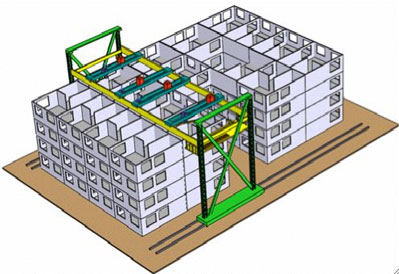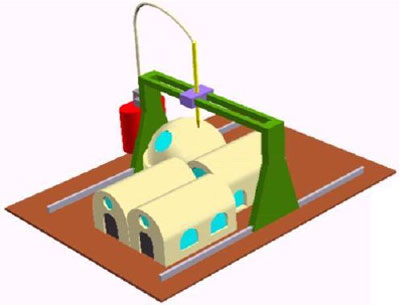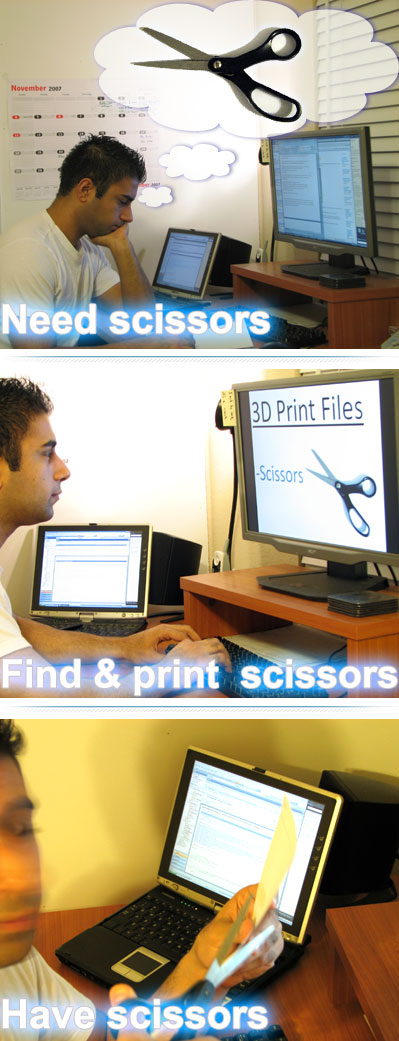Trying to predict the future is fun, because it can be really profitable. One of the things I think has the potential to be the next technological revolution like electricity or the internet is 3-D printing (also called rapid prototyping).
In the early years computers were only used by large corporations or the government. Same with 3-D printers. They are still large, very expensive, difficult to use, and not useful to individual consumers yet.
When the large computers of yesteryear existed, people didn’t think individual consumers had any real use for that technology. Obviously as they got smaller, more powerful and cheaper there were thousands of uses created.
The cool thing about this emerging technology is it’s following the same pattern as the personal computer. In this sense you can almost predict the future by looking at history.
If you don’t know what 3-D printing is, checkout some videos on the subject. This video is a promo video for a Zcorp 3D printer. If you already know what 3D printing is, you can skip the video.
This following video shows the possible use of 3-D printing for building homes and other structures. Instead of taking months to build a home, tracts of affordable homes can be constructed in hours or days.
You can find more info and amazing videos about this at https://www.contourcrafting.org/
The cool part is they already have this technology making small-scale buildings out of concrete and other construction materials.
Want to print out some condominiums?
Or maybe put up some warehouses in 1/10th the time of traditional construction?
The prices of 3-D printers are dropping, but they’re still well out of reach for individual consumers. One of the things that are allowing these printers to be built for (relatively) cheap is the Fab@Home open source 3-D printing project. They’ve basically given a whole FREE set of plans, instructions and software to allow you to build a working 3-D printer at home.
The printer can print small objects out of silicon, chocolate or other heat-malleable materials. This sounds trivial, but remember that Steve Jobs and Steve Wozniak (founders of Apple) both got their start by making do-it-yourself computers and selling them completely assembled.
This whole 3-D printing thing means that now you can share not just information, but THINGS over the internet. Right now you can send a news article to a friend across the planet by sending it to them and they print it out. Similarly, soon you will be able to “send” actual THINGS like jewelry, toys, medical instruments etc.. That’s an ENORMOUS advancement in technology which will end up having countless useful and entertaining applications across almost every industry.
- Telephone: Allows for transmission of voice over long distances.
- Internet: Allows for transmission of information over long distances.
- 3-D Printing: Allows for transmission of THINGS over long distances.
As a small example, let’s say I need some scissors for a project, but oops, I don’t have any!

As you can see I just hopped online, printed some scissors out on my 3-D printer and was on my way. As time goes on, these printers will be able to print out increasingly complicated devices, complete with computer circuitry and complex moving parts. Instead of having to buy a new starter for your car, in time you may be able to simply “print” one out at home!
HOW TO PROFIT:
This technology is still far from individual consumer hands and will take a few years to get there, so there’s no hurry to do anything now, however here’s some ways I’ve thought of that could make money from this new technology.
- Make a website that people can upload and share their 3-D print creations in the form of files.
- Buy stocks of companies that create 3-D printers or 3-D printing related products or software.
- Build Fab@Home 3-D printers and sell them fully assembled.
- Buy an industrial 3-D printer and allow other people to send you their CAD files to be printed into models.
- Make your own 3D print art.
- Make your own 3D print jewelry.
- Get the CAD drawings from buildings under construction and print models of the building.
- Use your imagination!
I for one am very excited about this technology. Perhaps I might buy one of these printers just to start tinkering around with it….who knows what could come of it!